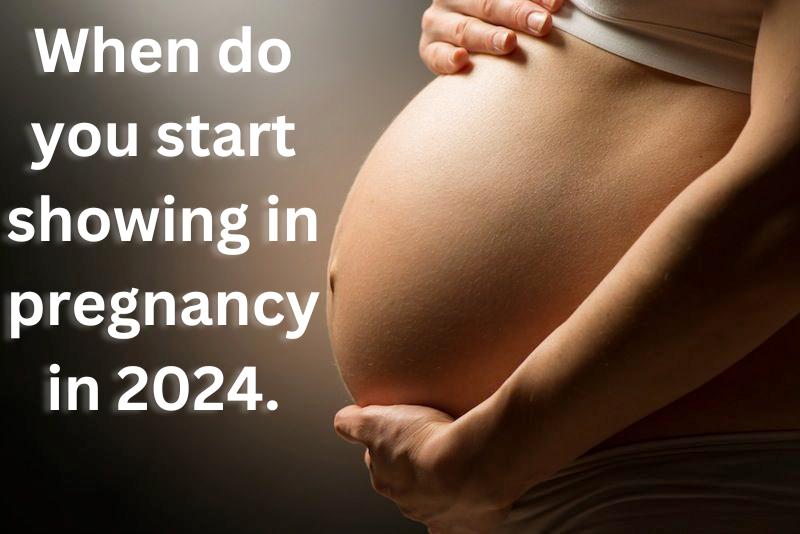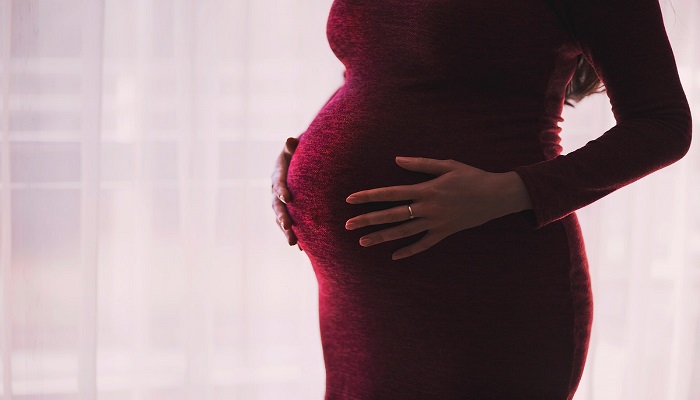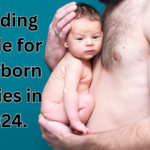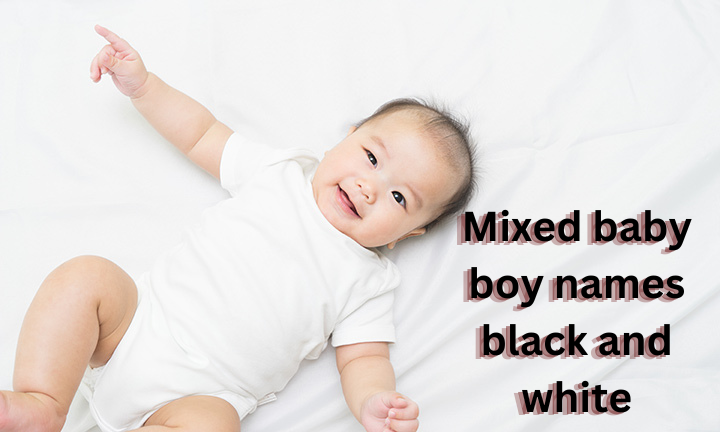Introduction
Congratulations on your pregnancy! As you embark on this incredible journey, one question that may be on your mind is when you will start showing your baby bump. The timeline for when this happens can vary from woman to woman due to various factors. In this comprehensive guide, we will explore the factors that influence when you start showing, what to expect during each trimester, tips for embracing the changes, and common FAQs related to pregnancy and showing. So, let’s dive in and discover when you may start showing during your pregnancy.

Table of Contents
Factors That Influence When You Start Showing
Several factors can influence when you start showing during pregnancy. While every woman’s experience is unique, here are some common factors to consider:
- Body Type and Weight: Your body type and weight can play a role in when you start showing. Women with a smaller frame or those who are underweight may show earlier due to less abdominal space for the baby to grow. Conversely, women with a larger frame or those who are overweight may take longer to show.
- Muscle Tone: The condition of your abdominal muscles can affect how soon you start showing. Women with strong abdominal muscles may show later as the muscles provide more support. On the other hand, weaker abdominal muscles may result in an earlier visible bump.
- Position of the Baby: The position of the baby in the uterus can influence how prominently the bump shows. If the baby is positioned towards the back, the belly may appear flatter compared to when the baby is positioned towards the front.
- Number of Pregnancies: If this is not your first pregnancy, you may show earlier in subsequent pregnancies. The abdominal muscles may be more stretched from previous pregnancies, allowing the baby bump to become more visible.
The Trimesters of Pregnancy and Showing
Understanding the changes that occur during each trimester can give you a better idea of when you may start showing. Let’s explore the different stages of pregnancy:

First Trimester (Weeks 1-12)
During the first trimester, your body undergoes significant changes on the inside, but outwardly, there are usually no visible signs of pregnancy. However, some women may notice subtle changes such as bloating or a slight thickening of the waistline. These changes are often attributed to other factors and are not immediately associated with pregnancy.
Second Trimester (Weeks 13-27)
The second trimester is often referred to as the “honeymoon phase” of pregnancy. It’s during this period that many women start showing their baby bump. Around the 14 to 20-week mark, the belly begins to become more prominent, and it becomes harder to conceal the growing size. However, it’s important to remember that every woman’s body is unique, and the timing can vary.
Third Trimester (Weeks 28-Birth)
As you enter the third trimester, your baby bump continues to grow, and it becomes unmistakably evident that you are carrying a precious life within you. By this stage, your belly is more pronounced, and you may need to invest in maternity clothes to accommodate your growing size comfortably.
READ MORE :
Feeding guide for newborn babies in 2024.
Tips for Embracing the Changes with Confidence
The physical changes that come with pregnancy can sometimes be accompanied by mixed emotions. Here are some tips to help you embrace the changes confidently:
- Self-Care: Take care of yourself by engaging in activities that make you feel good, such as gentle exercises like prenatal yoga or swimming. Pamper yourself with massages or prenatal spa treatments to relax and unwind.
- Maternity Fashion: Invest in comfortable and stylish maternity clothes that make you feel confident and embrace your changing body. Maternity fashion has come a long way, offering a wide range of options to suit every style and preference.
- Positive Self-Talk: Practice positive affirmations and remind yourself of the incredible journey your body is undertaking. Celebrate the beauty of your growing belly and the miracle of life within you.
- Connect with Others: Join prenatal classes, support groups, or online communities where you can connect with other expectant mothers. Sharing your experiences, concerns, and joys with others who are going through similar journeys can provide valuable support and reassurance.
When Do You Start Showing in Pregnancy? Understanding the Baby Bump.
As you eagerly anticipate the visible signs of your pregnancy, it’s natural to wonder when you’ll start showing your baby bump. While the excitement of this milestone is palpable, it’s essential to understand that the timing of when you start showing can vary from woman to woman. Let’s explore the factors that influence the appearance of your baby bump, the progression of your pregnancy, and expert insights to guide you through this transformative journey.
The First Trimester: Early Signs of Pregnancy
During the first trimester, your body is undergoing significant changes on the inside, while outwardly, there are usually no visible signs of pregnancy. This time is more about the changes and symptoms you will feel in yourself, such as pregnancy tiredness, morning sickness, and other early signs of pregnancy. It’s unlikely you’ll start showing in the first trimester as your baby is still in the very early stages of growing. Louise Broadbridge, a seasoned midwife and founder of Let’s Talk Birth & Baby, emphasizes that the appearance of your baby bump can be an exciting part of pregnancy, but every woman is different, and these changes take place at different times. In first pregnancies, your bump may be a little slower to the party and can be expected between 12 weeks pregnant and 16 weeks pregnant.

Factors Influencing When You Start Showing
Body Type and Weight
The size you were pre-pregnancy can impact when you start to show. If you carry extra weight around your stomach, your bump may be hidden in the early stages of your pregnancy. Additionally, genes can play a part in when you start to look pregnant, so it’s worth checking in with female family members who have had babies to gain insight into your own pregnancy journey.
Second Pregnancy
When you’ve already had a baby, you could see your bump sooner than the first time around. This is generally due to the muscles and ligaments having expanded once before and is nothing to worry about.
Pregnant with Twins
If you’re pregnant with more than one baby, you can expect to see your baby bump sooner rather than later. As your uterus is having to expand more to accommodate your babies, you may show before the end of your first trimester.
Not Showing Yet
If you’re not showing and feel like you should be, try not to worry. The position of your uterus can make it easy for your bump to be hidden away, and it is only later in the second trimester that the growth of your bump will be monitored. However, if you’re not showing by your third trimester, it’s advised to speak to your doctor.
Baby Bump Progression
As your pregnancy progresses, your baby bump will undergo significant changes. At 12 weeks pregnant, your baby will be roughly two inches, about the size of a small plum. By week 16, your baby will be the size of an avocado, and as you approach week 24, your baby will be almost a foot long, about the same length as an ear of corn. As your due date approaches, your baby could end up being as big as a watermelon.
Expert Insights: Meet Louise Broadbridge
Louise Broadbridge, a dedicated midwife and founder of Let’s Talk Birth & Baby, has delivered antenatal courses to over 45,000 expectant parents. Her expertise and experience provide valuable guidance for expectant mothers as they navigate the journey of pregnancy.
FAQs about Pregnancy and Showing
Here are some frequently asked questions related to pregnancy and showing:
Q: When will I start showing if this is my second pregnancy?
A: Women who have had previous pregnancies may show earlier in subsequent pregnancies due to stretched abdominal muscles from previous pregnancies.
Q: Is it true that some women start showing earlier with twins or multiples?
A: Yes, women carrying twins or multiples may start showing earlier due to the increased size of the uterus.

Q: Will my baby bump grow at the same rate throughout my pregnancy?
A: The growth of your baby bump may vary throughout your pregnancy. It’s normal for the growth to be more gradual at the beginning and then accelerate as the pregnancy progresses.
Q: When should I start measuring my baby bump?
A: Your healthcare provider will typically start measuring your baby bump during the second trimester to monitor the growth of your baby.
Q: What changes can I expect to see in my body during pregnancy, aside from the baby bump?
A: Pregnancy brings about various changes in your body, including breast enlargement, weight gain, changes in skin pigmentation, and hormonal fluctuations.
Q: When should I announce my pregnancy to others?
A: The timing of announcing your pregnancy is a personal decision. Many women choose to wait until after the first trimester when the risk of miscarriage decreases.
Q: What if I’m not showing yet, especially if it’s my first pregnancy?
A: Every pregnancy is different, and some women may take longer to show. If you’re concerned, consult with your healthcare provider for reassurance.
Q: When will I start to feel the baby’s movements?
A: Most women start to feel the baby’s movements, also known as “quickening,” between 18 and 25 weeks of pregnancy.
Conclusion
The timing of when you start showing in pregnancy is a unique and personal experience. While some women may notice subtle changes in their body during the first trimester, it is typically during the second trimester that the baby bump becomes more visible. Factors such as body type, muscle tone, and the position of the baby can influence when you start showing. Embrace the journey of pregnancy, celebrate your changing body, and surround yourself with positivity and support. Remember, you are embarking on a remarkable journey of creating life, and the changes you experience are a testament to the miracle of motherhood. Enjoy every moment and cherish the beautiful transformation happening within you.








Pingback: Food For A One Year Old: Your Baby Is One, Now How Do You Feed? - Babyfow.com
Your article helped me a lot, is there any more related content? Thanks!